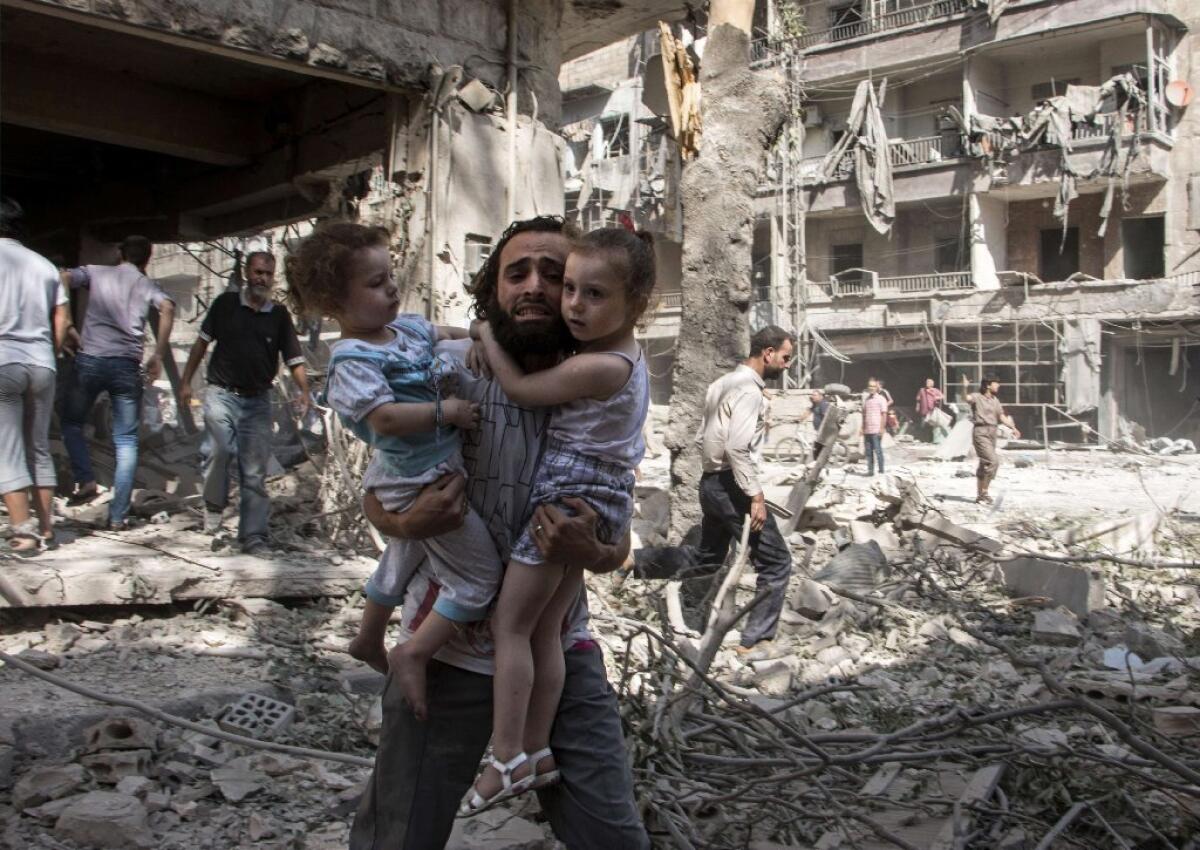How the Syrian crisis is particularly deadly for women and children

Shelling and air bombardments in Syria have had a disproportionate effect on women and children, according to a first-of-its-kind analysis published in the medical journal BMJ.
- Share via
Since 2012, the No. 1 cause of death in Syria has been the country’s gruesome civil war. A report last year from the United Nations’ high commissioner for human rights put the minimum number of conflict-related violent deaths -- including combatants and civilians -- at 191,136.
The war in Syria is many things, including a public health disaster. So an international team of epidemiologists, biostatisticians and health policy experts set out to see what they could learn from it. Their findings were published Wednesday in the BMJ.
The researchers, led by Debarati Guha-Sapir of the Center for Research on the Epidemiology of Disasters at the Catholic University of Louvain in Brussels, examined data on 78,769 civilian deaths between March 18, 2011, and Jan. 21, 2015. These deaths were verified by the Violations Documentation Center, a human rights monitoring group based in Syria.
The overwhelming majority of these casualties -- 77,646 -- occurred in territory controlled by forces opposed to the Syrian government or occupied by factions of the Islamic State. The rest occurred in areas controlled by the Syrian government. Overall, about one-quarter of these civilian victims were women and children.
In nongovernment territories, shelling was the biggest cause of civilian deaths. This category included artillery shells, tank shells, mortars, rocket launchers and missiles launched from the ground. Shootings and executions were the next two most common causes of death, followed by air bombardments. Ground-level explosives and chemical weapons accounted for well under 5% of civilian deaths.
Although it may seem that weapons kill indiscriminately, the researchers found some clear patterns linking certain types of arms to certain types of victims.
The risk of being killed by shelling was higher for women and children than for men, the researchers found. Compared with men, children were nearly three times more likely to die as a result of shelling, and women were twice as likely.
Air bombardments were even worse for women and children. Compared with men, the risk of being killed in an air bombardment was slightly more than three times higher for children and slightly more than two times higher for women.
Chemical weapons attacks were rare. But when they occurred, the risk of death was about twice as high for children and nearly five times higher for women than it was for men.
Compared with men, children also had nearly double the risk of being killed by ground-level explosives such as suicide bombs. The study authors noted that children had been intentionally targeted by suicide bombers in Syria, according to the United Nations.
“Using explosive weapons in populated areas in Syria has disproportionately lethal effects on women and children and should be urgently prohibited,” the study authors concluded.
Hamit Dardagan, co-director of Every Casualty Worldwide, a London-based group dedicated to recording lives lost due to armed violence, echoed that sentiment in an editorial that accompanied the study.
The study’s findings “should give pause to anyone who thinks there can be a safe hiding place for women and children when high explosives are being used in populated areas,” Dardagan wrote. “Their analysis also underlines the urgency of growing moves to ban the use of such indiscriminate weapons in populated areas.”
Follow me on Twitter @LATkarenkaplan and “like” Los Angeles Times Science & Health on Facebook.
ALSO
At U.N., Obama and Putin spar over Syria
Monkey see, monkey kill: The evolutionary roots of lethal combat
Scientists use math -- and computer war games -- to show how society evolved







